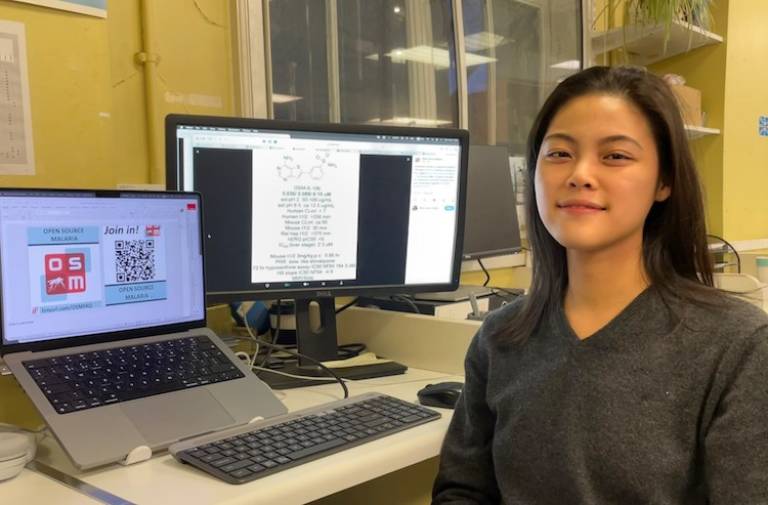Potential New “Reaction Hijacking” Antimalarial Discovered
13 February 2024
A team at the UCL School of Pharmacy have helped to lead an “open source” research project that has resulted in a molecule that kills the malaria parasite in a new way.

Malaria remains a terrible disease, causing hundreds of thousands of deaths each year, mostly children under the age of five. While vaccines are showing some promise, there remains an urgent need for new, simple, inexpensive medicines that work by killing the parasite in ways that are different from current medicines, so that we can fight the development of resistance.
A research team at the UCL School of Pharmacy involving Professor Matthew Todd and PhD student Yinuo Wang, have helped identify and optimise a new molecule, OSM-S-106, that kills the Plasmodium falciparum parasite responsible for most malaria cases. The way in which OSM-S-106 works is new – it blocks an important part of the machinery in the parasite that makes proteins. In addition, it does so by “hijacking” a naturally-occurring biochemical reaction, leading to the formation of a new molecule in the parasite that is a particularly effective “spanner in the works”.
“This project was a big collaborative effort,” said Professor Todd. “The drug discovery aspect was tough – we were struggling to improve our starting point, but by working with biology teams led by Leann Tilley in Melbourne and Elizabeth Winzeler in San Diego, the molecule’s beautiful mechanism was gradually revealed, and this provides important clues as to what we should do next. It also raises fascinating questions of how general a mechanism of killing this might be that we could use against other pathogens.”
The project is part of Open Source Malaria (https://github.com/OpenSourceMalaria/Series3/issues) meaning that all data and ideas are online and anyone may participate.
Yinuo Wang, UCL PhD student and joint first author, said “It was really fun to be part of this project and I’m looking forward to exploring what we’ve learned about this molecule.”
Further information
- Read the full article here: https://www.nature.com/articles/s41467-024-45224-z
- The “Toddler” group page: https://todd-lers.github.io/about/
 Close
Close

